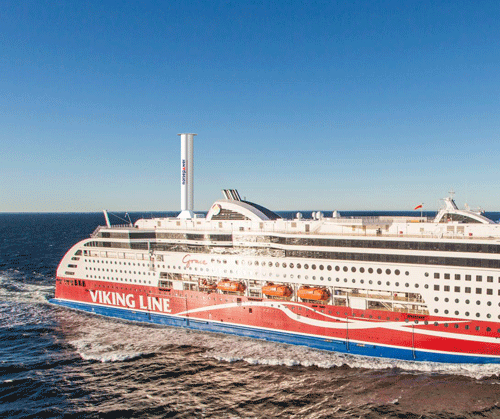
Flettner rotor for Viking Grace

Illustration of the Viking Grace with a rotor sail
The Viking Grace, which is owned by Finland’s Viking Line and operates between the Finnish port of Turku and Stockholm in Sweden, is already one of the most environmentally friendly ferries in operation today. Now, the rotor sail installation will further reduce fuel burn and emissions, saving an estimated 900 tonnes of carbon emissions in a year, equivalent to cutting 300 tonnes of LNG consumption.
The Norsepower rotor sail will be retrofitted during the second quarter of 2018 when one medium-sized unit, 24m in height and 4m in diameter, will be installed. The energy-saving devices can be retrofitted on existing vessels without off-hire costs, or fitted on board new ships during construction. The technology is based on an up-to-date version of the Flettner rotor, a spinning cylinder that uses the Magnus effect to harness wind power and reduce engine load. The system is fully automated so that when the wind is strong enough to deliver fuel savings, the rotors start automatically.
Ulf Hagström, senior vice president of Marine Operations & Newbuildings at Viking Line, said that the company was proud to be working with Norsepower. “Our cruise vessel is the first to use a combination of alternative clean fuels, modern rotor sails, electric propulsion, and a hydrodynamically optimised hull. We believe in the rotor sail solution technology’s ability to enhance our ship’s performance by enabling significant reductions in fuel burn and costs, as well as carbon emissions,” he commented.
